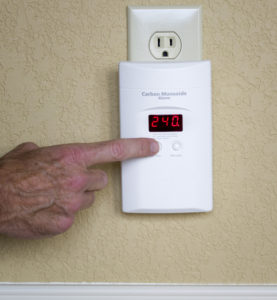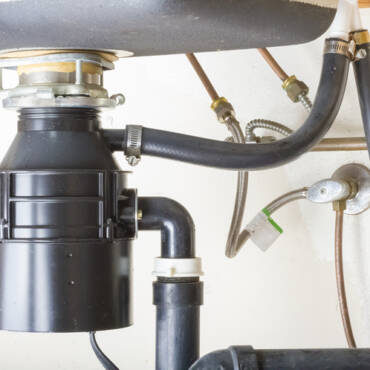 From the earliest days when humans harnessed fire for warmth and for cooking, flames have been one of our biggest comforts – and one of our biggest dangers. Nowadays, when furnaces have replaced fireplaces, we may think technology has eliminated the risk of carbon monoxide poisoning. In reality, a look at the headlines since our furnaces have fired up a few months ago shows us that this poison gas is still a real problem.
From the earliest days when humans harnessed fire for warmth and for cooking, flames have been one of our biggest comforts – and one of our biggest dangers. Nowadays, when furnaces have replaced fireplaces, we may think technology has eliminated the risk of carbon monoxide poisoning. In reality, a look at the headlines since our furnaces have fired up a few months ago shows us that this poison gas is still a real problem.
Carbon monoxide, or CO, is produced whenever there is an incomplete combustion of carbon, which happens anytime we burn a carbon-based fuel. These types of fuel include gasoline, natural gas, propane, wood, charcoal – anything that isn’t nuclear, solar, wind or electric.
CO is odorless, colorless and deadly. CO poisoning can cause headache, dizziness, confusion, weakness, nausea and stomach pain, vomiting, and chest pain. Many people feel like they have the flu or food poisoning, when in fact they are experiencing CO poisoning. If CO builds up indoors while families are sleeping, people may die rather than waking up from poisoning discomfort.
The statistics are alarming. More than 400 people in the U.S. will die of CO poisoning each year, and 20,000 will become sick enough to need emergency room visits. Just 9 ppm in your home’s air is the maximum allowable concentration for short term exposure. At 400 ppm, your family will experience life-life-threatening symptoms in less than 3 hours.
Common causes of indoor CO poisoning are:
- Incorrectly installed, badly maintained or poorly ventilated furnaces, stoves, and water heaters
- Damaged or blocked flue, chimney, vents or exhaust pipes
- Burning fuel in an enclosed unventilated space, like operating a grill or running a car in a closed garage
Avoid CO poisoning by having your furnaces and appliances installed by professionals and checked and maintained regularly. Purchase equipment that is certified by a national testing agency such as Underwriters’ Laboratories. Have your fireplace chimney checked yearly.
NEVER fix your furnace, pipes or vents with tape or gum
NEVER use your oven or stovetop to heat a room
NEVER burn charcoal indoors
NEVER use a camp stove or grill indoors
NEVER use a generator inside your home, or fewer than 20 feet from a window, door or vent
ALWAYS install carbon monoxide detectors that run on electricity, with a battery backup. We recommend a digital detector, placing one on each floor of your home including the basement and one near any attached garage. A digital detector will enable you to see the actual level of CO in your home, rather than just alerting you when it is at life-threatening levels.
Place the detector at least 5 feet from your furnace, stove, fireplace or heater. Do not place the detector inside any cabinets, behind furniture or near a window, door or ventilating fan. CO is heavier than air, so do not place the detector in the ceiling.
By changing the battery back up every spring and fall, purchasing new detectors every six years, and having your furnace and other fuel-burning appliances checked regularly, you’ll protect your family from CO poisoning.
Questions about CO or choosing or installing detectors? Just call 708-479-9350. We will be happy to help!




Add Comment